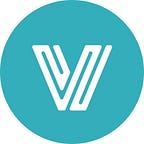Three Ways to Prove ROI on L&D
Emerald Work’s Report found in 2020 that only 8% of L&D teams calculated ROI for their learning programs and only 18% regularly communicated performance impacts to senior management. Without this key information, how can you expect to communicate the value your program brings to decision-makers and business leaders? Is there a best way to calculate and showcase ROI for L&D programs?
There are several schools of thought and approaches. According to the CIPD, 36% evaluate their impact based on participant satisfaction, 18% evaluate based on change in knowledge or skills, and 13% go deep and asses behavioral change through the transfer of learning into the workplace.
The industry doesn’t have a standard method for determining ROI, but you can improve proficiency through the assessment and addressing of skill gaps in employees. Ultimately, if you can improve proficiency, you can drive performance and productivity which should in turn benefit the organization’s revenue.
Proficiency is the most logical value for measuring L&D ROI. Below are our top three ways to do so.
- Modernize learning for the tech age. Face-to-face classroom training does have its benefits, but an even better approach is one that is blended. You can supplement with new tools such as virtual microlearning. When it’s done well it can engage learners instantly in the flow of their work and has a measurable impact on behavior change and business outcomes. Microlearning that is fun, engaging, and accessible is more likely to be retained by workers which will improve their productivity and overall performance.
- Adapt programs based on proficiency and engagement metrics. It’s important to continuously engage with employees throughout their professional development to reap the benefits of their improved proficiency. If you’re a service company, for instance, it can improve your customer service and loyalty. If you know which competencies have the greatest impact on performance, you can better adapt your programs and allocate resources to where they are most needed.
- Tie business goals and learning goals together. Every L&D program needs to have measurable goals that tie back to the business. Business goals must be established first and then the questions of what capabilities are needed, what strengths and weaknesses employees have, and how they can be helped need to be asked. By making sure your L&D programs align with your business goals, you can demonstrate the value they bring to your employees and organization, and then to your customers.
Determining how best to measure ROI for L&D has been challenging for a long time but shifting from financial metrics to proficiency makes the most sense. It’s crucial to develop a system that both identifies the strengths and weakness of employees and to use effective learning programs to close the skill gaps. Microlearning gives leaders the necessary information so they can focus on the specific areas of need and helps to ensure L&D objectives and always aligned to impact the performance of the business.
Interested in learning about first line managers? Curious about how leadership development can help your organization reach its full potential? Get in touch now.
Vayability is a leadership development platform built from the ground up to accelerate the development and business impact of emerging talent. Combining more than 20 years of executive learning, Vayability focuses on impactful leadership skills, personalized learning, live coaching, and measurable growth. Find out how top companies embrace success at vayability.net.
Written by Rachel Strysik
